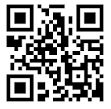Anyone still scanning QR Codes?
Perhaps. 
As an alternative to barcodes, QR Codes were very promising because they are 2-dimensional and can store more information than the barcodes. QR means Quick Response. The little black and white, pixel-square codes were developed in Japan, by Denso, a Toyota subsidiary, in the 1990s to track car parts.
And, with the popularity of smartphones, the creators of QR Codes were optimistic that everyone would be downloading the codes to their phones to scan for a variety of information on the go. 
However, nowadays not many people are using their smartphones to scan QR Codes. In fact, Lifelearn states that since 2011 when they were everywhere only 21% of smartphone users have been scanning them.
Likewise, MarketingCharts has reported that even though the number of smartphone users
has increased, the scanning of QR Codes has stalled.
However, some people are still optimistic about the future uses for QR Codes. Locally, Mike Russell, a residence technician at Staples, Lawrenceville, NJ, recently said that their computers have the codes on their tags and if customers scan tags they can get specs about their computers.
But Paul Pascale, assistant manager at Sprint, Fairless Hills, Pa, sometime ago said, “some people don’t like these codes, but some do.”
Some people think the codes are more popular overseas like in Singapore, where shy singles at a bar can communicate with each other by sending a barcode message on a bottle to someone of interest.
“After you’ve written something for the person you like, flip over the tag, buy another beer and place the tag over it. Then have it sent to that special someone so they can read the message you can start a conversation,’’ writes Emma Hutchings for PSFK.
Here in the U.S., QR Codes are used mostly for advertising coupons in the food, fashion, and beauty industries.
Kate Freeman’s article in Mashable tells us about Split Bread, a gourmet sandwich shop in San Francisco, that offers a service where customers order and pay for their food using the codes on their tables. According to Freeman, 30 per cent of patrons to this establishment pay using the codes.
Overall, according to MarketingCharts staff, women are more likely to scan and redeem QR Codes than men, as they are more likely to use coupons in general.
Nevertheless, a slight majority of women prefer to display coupons to cashiers rather than scanning them shows the study by MarketingCharts staff. The study claims that 36 per cent find push notification of mobile coupons offers useful, but less than three in 10 prefer barcode-scan mobile coupons.
This same study notes that one in five mobile users do not want coupon offers on their devices. However, one can use QR Codes for more than coupons scanning.
For those fascinated with QR Codes, they have websites that can create them,’’ said Russell of Staples. However, “I haven’t seen many people using them,’’ he added.
QR Codes are built in apps that can be downloaded from the Operating Systems of smartphones. There are QuickMark and Enigma for Androids, and MiraScape for the iPhone.
